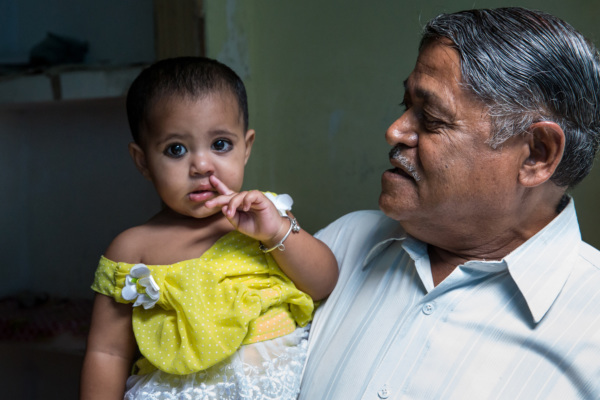100 Days of Harm: Jeopardizing Global Progress and U.S. Interests

In the lead-up to World Contraception Day, I spent a week in Northern India thinking a lot about my mom.
My mom is a nurse in rural Minnesota; she is selfless, she goes above and beyond the call of duty, and she made me into the man I am today—the man who cares about access, rights, and quality in sexual and reproductive health—because she never gave me a free pass. While she probably doesn’t know it, her stories helped to propel me on this course and all these years later, landed me in Kanpur District in Uttar Pradesh.
The goal of my trip was to listen to women talk about their experiences in accessing contraception. In this region of India, more women die from complications in pregnancy and childbirth than anywhere else in the country; and nearly 50% of women in rural areas give birth at home, not at health facilities.
One of the keys to ensuring women and girls have the best possible maternal health outcomes is to provide complete access to the tools and high-quality care, counseling, information, education, and services needed to time and space their pregnancies. That means not only prioritizing investments in contraceptive services, but building a base of champions to take on this cause as well.
In India, contraception is widely considered to be the responsibility of women. Yet after just a day in the field it became clear that male involvement is needed to ensure quality services are delivered and that women are able to access and use them. And, by involvement, I mean active engagement.
By accident, I started talking with Khalil Ahmad, a proud man in his early 60s who owns a photography business. Khalil and his wife Sabra have five married children: three sons and two daughters. They live with their sons and their wives and their five grandchildren. I was at Khalil’s house to observe a group counseling session run by Rajani, a PSI-trained Interpersonal Communicator (IPC) through Project PEHEL. Khalil opened his home to Rajani, so that she can help educate women about their contraceptive choices. The women in the group are both users and non-users of family planning. This allows them to share their experiences, have frank discussions, dispel myths and assuage fears.

On the surface, none of this may seem remarkable, but in a country where men and women rarely socialize together—and where even talking about sex is taboo—Khalil’s hospitality is extraordinary. I wanted to know what motivated him. The answer illustrated the powerful influence family planning programs can have not just in women’s lives but in men’s. Khalil is personal friends with Rajani’s supervisor, whom he considers a sister. She is the one who talked to him about family planning, cementing him as a supporter and leading him to offer his home for the group counseling sessions. When I was at his house, two of Khalil’s own daughters-in-law were participating in the group session.
Khalil went out of his way to underscore that he doesn’t impose his views on his children, but that they too recognize the benefits of family planning and birth spacing. He admitted that he also talks with his friends about family planning even though they are past reproductive age. His hope is that these discussions will help them when they are talking with their own children about family planning.
Khalil’s isn’t the only story that gives me reason to believe there is a burgeoning foundation upon which to build a program for male engagement in India—and to push the boundaries of support for family planning.
In rural Jaheli, I met Vijay and his wife Reena, a newly-married couple who want to spend time together before having children. In Kanpur, I also met Roshni and her husband Nikhil who have two children and are expecting their third. Roshni and Nikhil came to the district hospital to meet with a family welfare counselor to talk about a long-acting contraceptive method once they have their third child.
In every clinic we visited, it was common to find men accompanying their wives and sisters-in-law, or even minding children while their partners waited for services. Instead of viewing them as bystanders we should take advantage of their presence. Why not talk with them about their motivation for bringing their loved ones? Why not talk directly with them about family planning?
There is no question that engaging men will take massive political and financial investments. To improve national outcomes around sexual and reproductive health, the Government of India has little choice but to act. In the meantime, I am going to thank my mom for pushing and challenging me, and I am going to make sure she knows that she is the reason I care about ensuring access to quality family planning services for women and girls the world over.
We are fighting back against the onslaught of harmful policies that discard reproductive rights.
Stay informed about the issues impacting sexual and reproductive health and rights.
